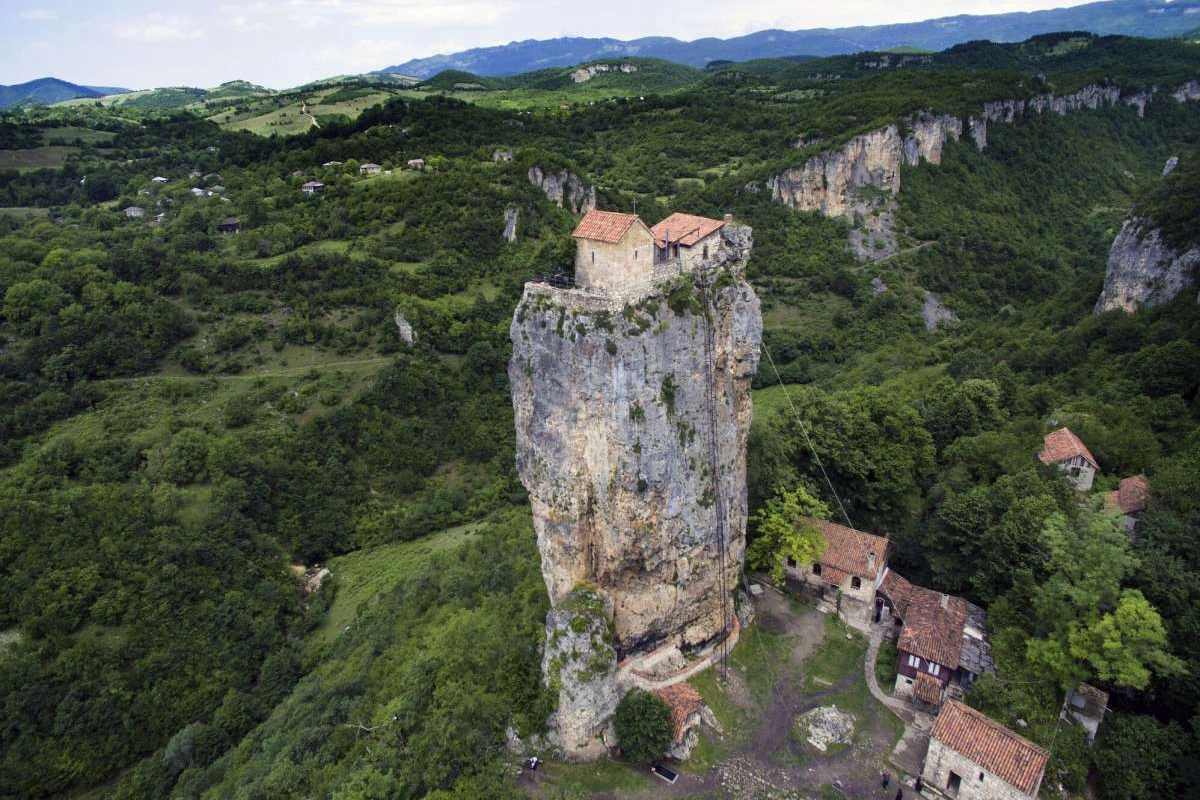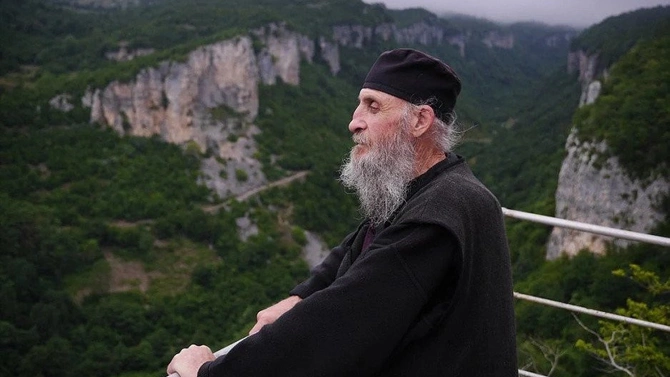
Simon Stylites was a 5th century Christian mystic, later celebrated by Tennyson for having spent decades meditating on the top of a pillar. In Katskhi, Georgia, you’ll find a chapel in the sky, refashioned for latter-day Stylites.
Katshki Pillar’s naturally eroded ‘column’ of limestone, around 40m high, is topped by a tiny hermitage and refuge. Image: Robert Fowler/Shutterstock
As a child, I remember being fascinated by the 5th-century Syrian saint, Simon Stylites – who, according to our Religious Education teacher, decided to spend 37 years on the top of a column. His professed desire to seek a meditative sanctuary was undermined by the many curious onlookers who hounded him, wondering what on earth he was playing at. To my teenage self, it all sounded so mad that I imagined Simon as having out-Monty-Pythoned the Life of Brian centuries ahead of himself. And frankly, I assumed that something had been lost in translation. Surely nobody really did that, did they?

Image: Wikipedia
Well, apparently, they did. And not only Simon. Stylites were, in fact, a group of ascetics who believed in salvation through the mortification of the flesh. While some British folks still use the term “up the pole” as an idiom for crazy, for Stylites, it was precisely this kind of self-enforced inaccessibility that helped them keep to their regime of self-denial. A sense of ‘self-loathing’ satirized by Tennyson in an 1842 poem brought Simon Stylites' memory back into public focus.
You might assume that Stylites have long since disappeared, replaced occasionally by stunt performers like David Blaine, whose

However, in central Georgia, there is one place where the Christian mystic aspect of a Stylite existence was revived in the 21st century atop the “Katskhi Pillar.” The naturally eroded ‘column’ of limestone, around 40m high, is topped by a tiny hermitage and refuge. In pre-Christian times this prominently phallic shard of rock had been seen, predictably enough, as a symbol of fertility. Then between the 5th and 8th centuries[1], starting not long after Simon Stylites himself had popularised the practice, it was turned into an inaccessible perch for Christian hermits. The site appears to have been abandoned in the 15th century – an era during which the Georgian kingdom fragmented and by which Stylite practices were losing currency in general. Until rock-climbing archaeologists revisited the site in the 1940s, Katskhi’s history was essentially forgotten.

Father Maxime Qavtaradze, Georgia’s modern-day Stylite. Image: delicatours.ge
However, in the mid-1990s, a former crane driver turned holy man, Maxime Qavtaradze, decided that his calling was to restore the site and become the first living Stylite for almost 600 years. Starting almost single-handedly, Father Maxime lived initially at the base of the rock, surviving freezing-cold winters by sleeping in a disused industrial fridge. Eventually gaining ever more help from local villagers plus a national cultural heritage group, he managed to install a rickety ladder that’s been nicknamed the “stairway to heaven,” along with a pulley system to bring stone and building materials to the summit. Once the building on top was suitably advanced, Father Maxime did indeed take up residence for well over a decade. He descended twice a week to give spiritual talks to followers – generally men who had been ‘problem’ children and struggled to find their place in society.
Climbing the rickety metal ladder to the top of the rock takes around 20 hair-raising minutes – a climb only permitted for monks who are now based at a monastery at the foot of the pillar rather than living full time on the summit. However, that doesn’t stop tourists visiting from all over the country to admire the surreal site. The access path is a 20-minute taxi ride from the memorable Imeretian mining town of Chiatura, itself an hour’s bus ride east of Kutaisi or 3½ hours west of Tbilisi.
[1] According to most sources, though some recent analysis suggests that the actual date could have been considerably later.
Share on social media